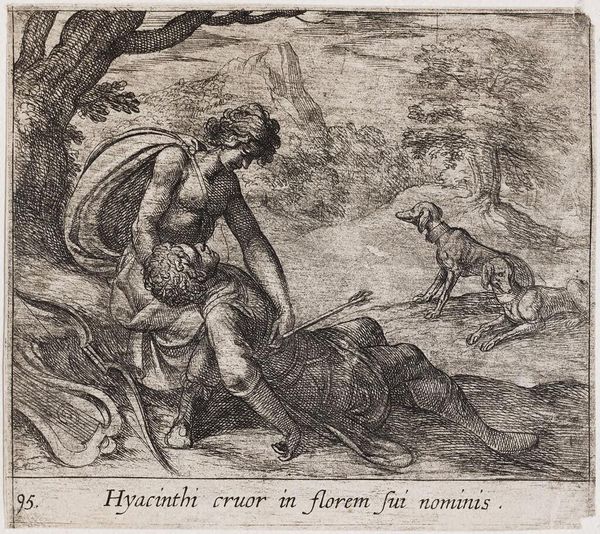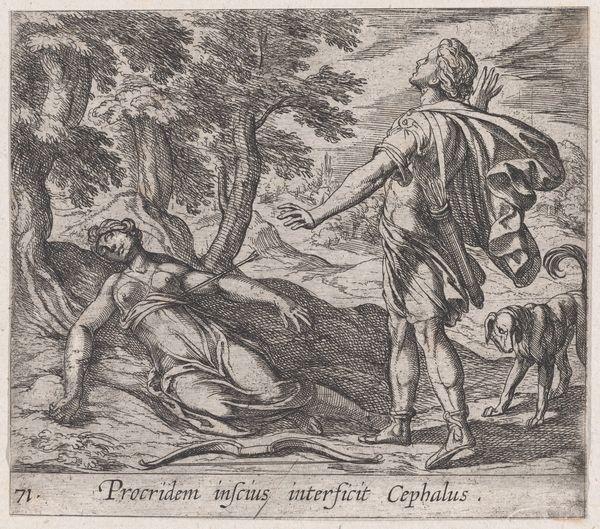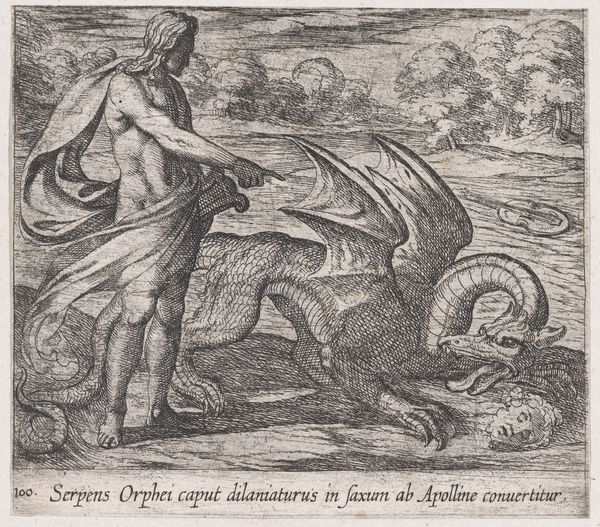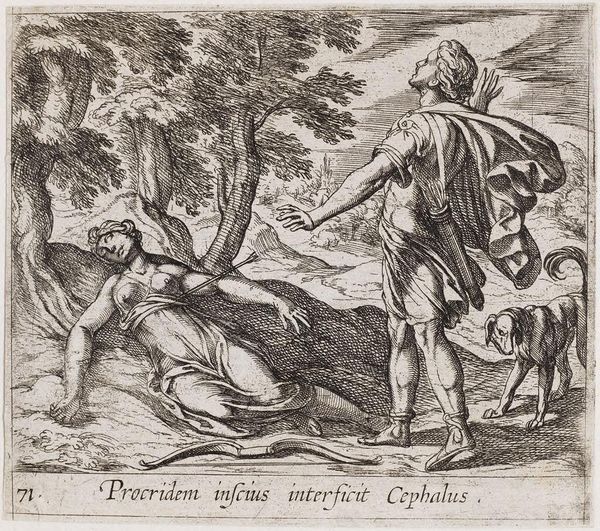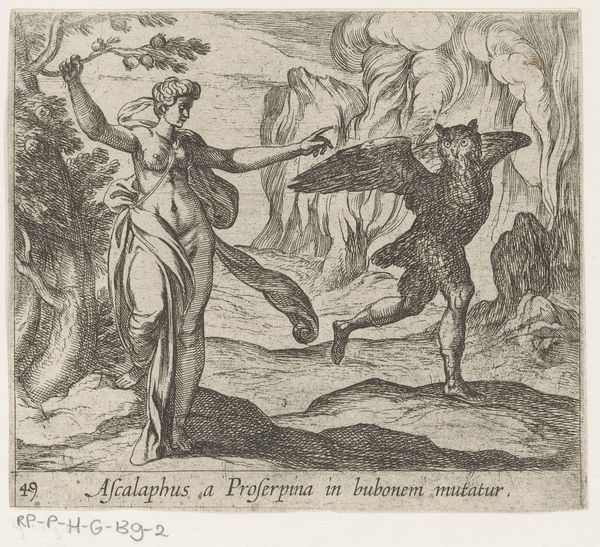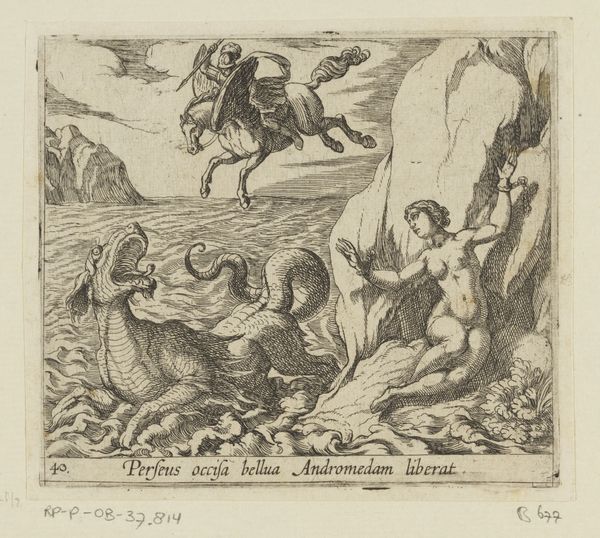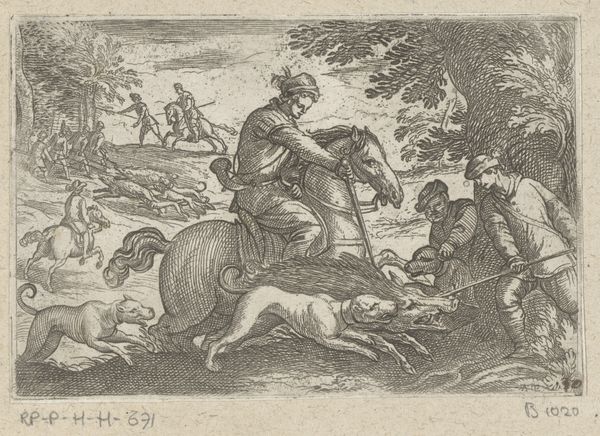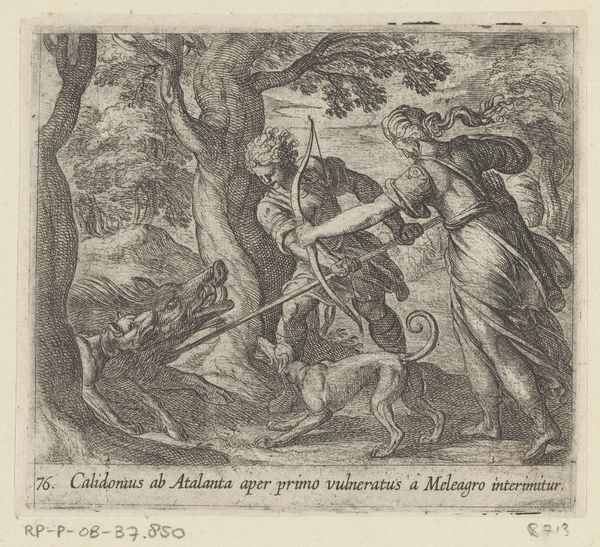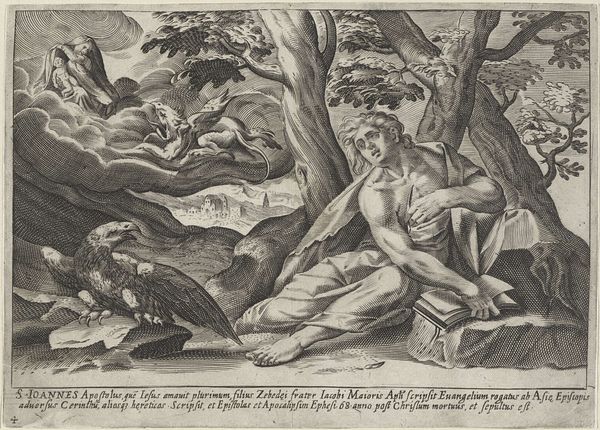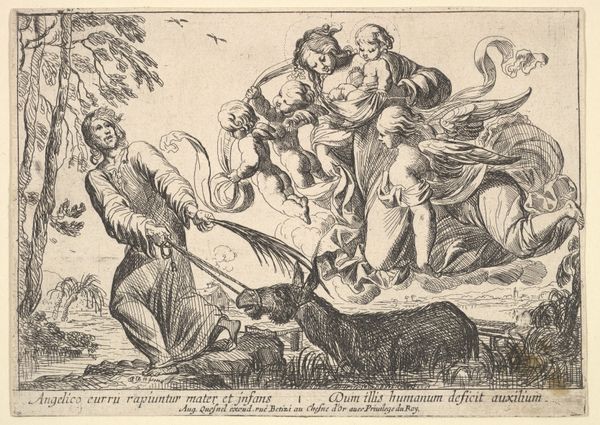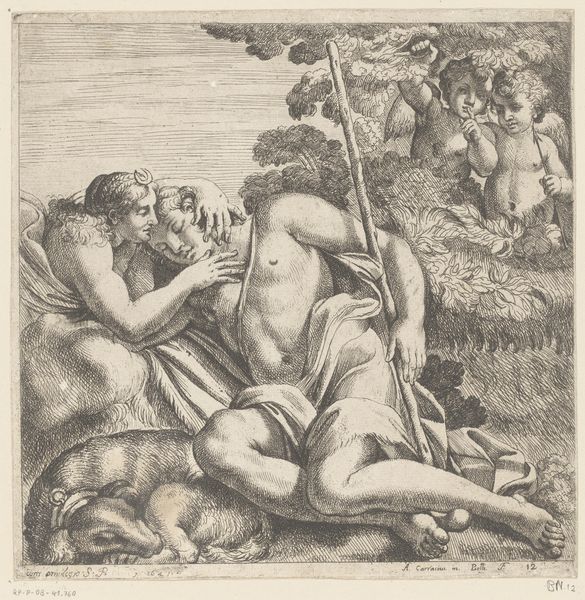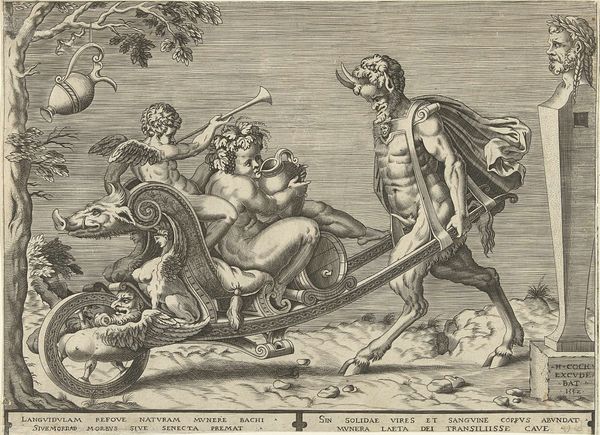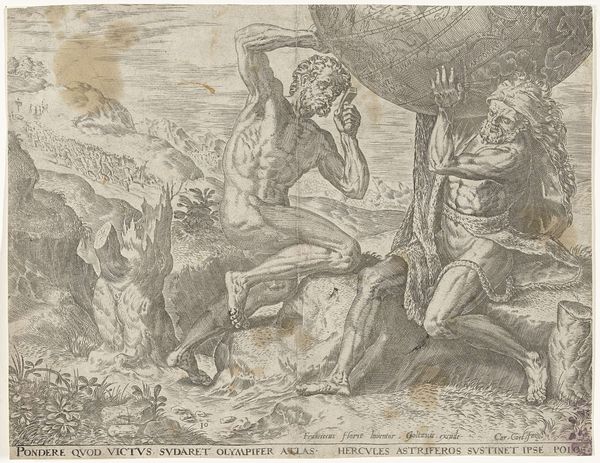
Plate 95: The Death of Hyacinthus (Hyacinthi cruor in florem sui nominis), from Ovid's 'Metamorphoses' 1606
0:00
0:00
drawing, print, etching, engraving
#
drawing
#
allegory
# print
#
etching
#
landscape
#
mannerism
#
figuration
#
history-painting
#
italian-renaissance
#
engraving
Dimensions: Sheet: 4 1/16 × 4 1/2 in. (10.3 × 11.5 cm)
Copyright: Public Domain
Editor: This is "Plate 95: The Death of Hyacinthus," an etching and engraving by Antonio Tempesta from 1606. It depicts a really tragic scene. What details do you notice right away, and how do you interpret this work? Curator: Immediately, I see the dense web of lines – the product of labor – that create this landscape. The very act of producing a print, like this engraving, makes art reproducible and thus challenges traditional notions of unique, auratic artworks. What about the landscape, how does it play into the scene’s production? Editor: It does create a theatrical stage, of sorts, amplifying the emotions…and it’s not just about individual drama, but this print's availability means more people engaging with Ovid's stories! Curator: Exactly. Consider also the economic exchange: Tempesta created this to be consumed, to generate wealth. How do the materials themselves – the copperplate, the ink – dictate the style? Editor: I suppose the fine lines are almost dictated by the etching process. But beyond materials, does Tempesta’s choice to depict a classical myth – from Ovid’s ‘Metamorphoses’ - mean anything in terms of the labor involved? Like, compared to, say, genre scenes. Curator: It signals a sophisticated audience, capable of consuming classical narratives, but more interestingly, his choice elevates printmaking. Mass production need not only portray everyday life, but can disseminate 'high' art, thereby challenging the art world’s established hierarchy. What do you make of this 'Italian Renaissance' label in connection with labor and production we've discussed? Editor: Interesting. The "Italian Renaissance" label now seems to apply not just to style, but also to Tempesta's business approach! Thanks, I’ll be looking at art production through this lens from now on! Curator: Indeed, the lens of materiality and labor can unlock fresh interpretations of even well-known images.
Comments
No comments
Be the first to comment and join the conversation on the ultimate creative platform.
